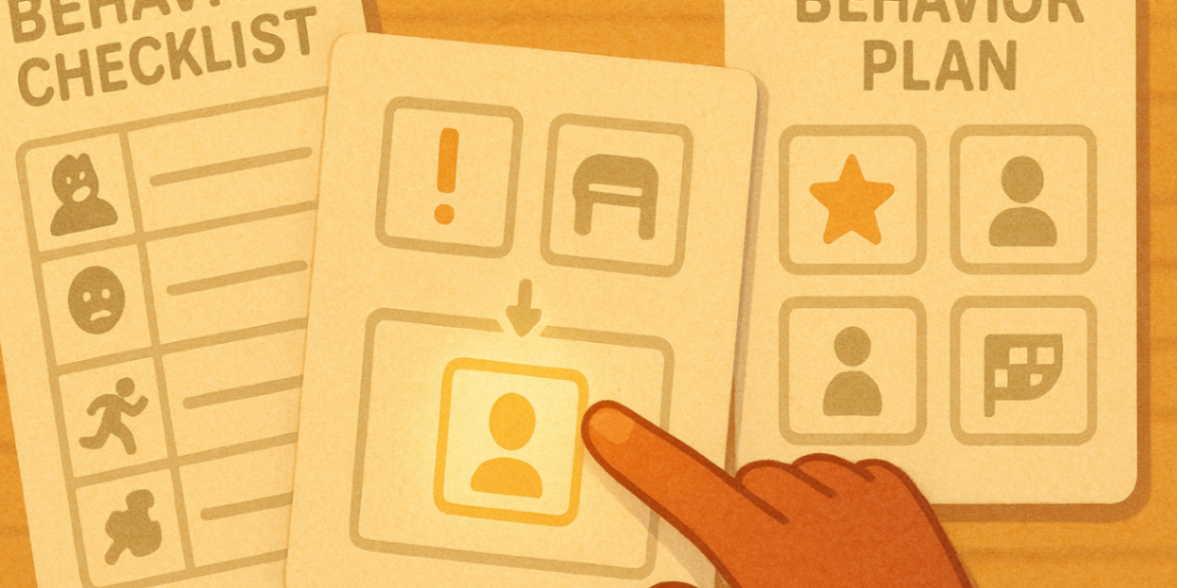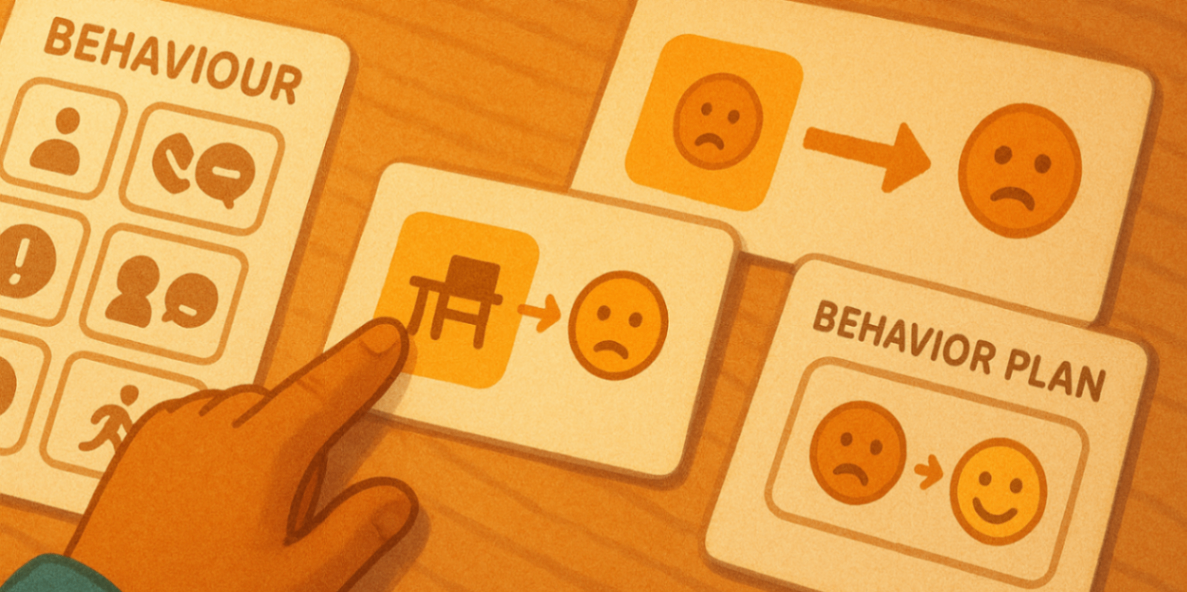
the role of functional behaviour assessments in therapy
5 September, 2025
Updated on November 8, 2025
When challenging behaviours occur, understanding why they happen is the first step toward meaningful change. At daar in Liverpool, our NDIS-approved behaviour support practitioners use Functional Behaviour Assessments (FBAs) to uncover the underlying causes of behaviour and design focused, effective plans that help children, families and schools work together for real progress.
Key Highlights
-
A functional behaviour assessment (FBA) is a way to find out why a student is showing challenging behaviours.
-
The main goal is to figure out the "function" or reason that a certain behaviour has for the student.
-
Knowing this is very important for making a behaviour support plan that uses the best strategies.
-
A FBA works by getting facts, looking at the data, and making an idea about why the student behaves the way they do.
-
This is a team process with teachers, specialists, and families often working together.
-
In the end, a FBA helps to build effective interventions that can bring about good changes in student behaviour and improve student wellbeing.
What Is a Functional Behaviour Assessment?

A Functional Behaviour Assessment is a structured process that examines what occurs before, during, and after a child’s behaviour. Rather than simply reacting to behaviour, an FBA asks: “What purpose does this behaviour serve?” By digging into these patterns, practitioners identify triggers, reinforcers, and the function of the behaviour — whether it’s attention-seeking, escaping a demand, obtaining something, or sensory regulation
Why FBAs Matter for Behaviour Support
Without understanding function, interventions tend to be guesswork. An FBA provides the data and insight needed to:
-
Create a personalised behaviour support plan that targets the real cause of the behaviour
-
Teach replacement skills rather than simply attempting to stop behaviours
-
Modify the child’s environment to reduce triggers and promote positive behaviours
Research and practice show that when assessments drive planning, children make more consistent progress
Common Behaviours Addressed Through FBAs
A functional behaviour assessment is used to look at many types of behaviours of concern. It can be helpful for any student behaviour that gets in the way of their learning, makes it hard for others to learn, or puts people at risk. With FBA, the goal is not only to stop the behaviour. It is also to find out the function of the behaviour so people know why it happens.
It is important to ask what the student is saying or wants to do. This is the first thing to do for giving the right support. The next part looks at some of these actions, the way to see them, and how to know if an fba should come next.
Types of Challenging Behaviours
Challenging behaviours are actions that make things hard, cause trouble, or are not right for a student's age. These behaviours of concern can make it hard for a student to do well in the classroom. They can also affect how the student gets along with other people like friends and teachers.
An FBA can help with many different actions. The main goal is to find out the root cause of the behaviour. This helps to make a positive behaviour support plan. A good behaviour support plan is built on knowing why the behaviour happens. This lets you use positive behaviour support to guide the person to better ways of acting. A strong FBA and support plan work together to build more positive behaviour over time.
Some behaviours that can lead to an fba are:
-
Actions that stop the student or their classmates from learning.
-
Behaviour that hurts the student, classmates, or staff.
-
Disruptive actions, like running out of the classroom, throwing things, or having an emotional outburst.
-
Not following directions or not doing assigned work.
Recognising When an FBA Is Needed
Knowing when to start an FBA is important for giving help on time. A teacher or support team should start this process if a student's problem behaviour keeps happening and does not get better with normal classroom management ways. It is good to use FBA when other behaviour methods in the class do not work for the student.
The goal is to gather information before the behaviour gets worse. Watch for patterns in what happens. For example, does the behaviour show up at a certain time of day or during a specific activity? If you see this, it can be a good sign that you need to take a deeper look.
Consider an FBA when you notice:
-
A student's behaviour often gets in the way of their own learning or stops others from learning well.
-
A new behaviour of concern shows up and stays.
-
The number of times or how strong a known problem behaviour is changes a lot.
Key Participants in the FBA Process

An effective functional behaviour assessment brings together several key people. The school staff, like teachers and support staff, watch student behaviour. They write down any behaviours of concern. They also help us know what is happening at the time of day and which aspects of the environment may affect behaviour.
Caregivers and parents also take part in individual behaviour support planning. They share their thoughts and experiences. School leaders help the team put behaviour support plans into action. These plans help bring out positive behaviour and support overall wellbeing. This process helps us all work together when dealing with challenging behaviours.
Roles of Teachers, Specialists, and Families
Each person taking part in the FBA process has their own view and ideas. It is important for them to work together. This helps everyone understand the behaviour of concern in the right way. Then, they can make a plan to help the person. A plan made this way will work well in places like at school and at home.
The Australian Institute for Teaching and School Leadership (AITSL) says it is important to talk and work with parents and caregivers to help student learning and wellbeing. This partnership matters a lot when you do an FBA.
Key roles include:
-
Teachers: They watch students in the classroom and record when and where the behaviour happens. This helps everyone know what is going on.
-
Specialists: A school psychologist or a behaviour analyst can help. They know about behaviour, how to read data, and how to make a plan to help.
-
Caregivers/Families: Caregivers give important information about the student. They know about the student’s history, health, wellbeing, and how they act at home or outside of school.
Involving Students in Their Own Assessment
While it may not always work out, like if the student's age or ability makes it tough, having the student help with their own assessment can be very strong. True inclusion is about letting the student speak up and feel like they help decide what happens next for them.
You can do this by talking to the student or using rating scales. This way, the student can say what they feel about their own behaviour. You can ask what things they find hard. You can also ask what situations they like. Learning about the student’s behaviour from their own point of view can help you find things that just watching them may not show.
This way, the student feels respected. They also get more control over their own learning and growth. It helps them see why they act a certain way. There is more trust built between them and others. This improves their wellbeing and helps them show more positive behaviour.
Step-by-Step Process of Conducting an FBA
A functional behavioural assessment is not just one step but a clear process. You have to go through each step to make sure that all the information you get is complete. This helps to make choices that are based on real facts. Taking things step by step is what makes a functional behavioural assessment, or FBA, work so well.
This process helps the team start by finding the problem. After that, the team works together to create a behaviour support plan that matches what is needed. The steps below show the way, so everyone can see how to do a good assessment.
Identifying and Describing the Problem Behaviour
The first thing you need to do is to make sure you know what the problem behaviour is. You should not just call a student "disruptive." The team needs to agree on a clear definition. This definition should be specific, easy to see, and simple to measure. That way, everyone can look at the same behaviour and know when it happens.
A good way to describe a behaviour is to use words that help anyone understand it, even if they do not know the person. For example, instead of saying "is aggressive," you could say "punches other students with a closed fist." This way, people will know exactly what happens.
This clarity is important because it takes away any guesswork or personal opinions. It helps to make sure that when you gather information, the data you get is the same every time and you can trust it. This gives a solid start for the rest of the FBA process.
Collecting and Analysing Behavioural Data
Once the team knows what the behaviour is, they need to start gathering information. They do this in a few ways. Indirect methods are when the team talks with teachers and caregivers, or looks at a student's school records. Direct methods are different. In this way, the team watches the behaviour as it happens. They do not change anything in the environment.
Watching someone directly is often the best way to find a pattern. Teams look at this behaviour data. They try to see if there is a link between the behaviour and what happens right before it, called the antecedent, or what happens after it.
This helps you come up with an idea about what the behaviour does. A simple data table for this could look like this:
|
Antecedent (What happened before?) |
Behaviour (What did the student do?) |
Consequence (What happened after?) |
|---|---|---|
|
Teacher gave the direction, "Time to do your math." |
Student ripped the worksheet and threw it on the floor. |
Teacher removed the task and sent student to a quiet corner. |
|
Peer took a toy during free play. |
Student screamed and pushed the peer. |
Peer gave the toy back; teacher intervened. |
Tools and Techniques for Effective FBAs

To make sure the data collection is systematic and thorough, teams use certain tools and techniques. These tools give a clear and organized way to record what you see. This makes it easier to find patterns that you might not see in other ways.
Using things like ABC data collection, scatter plots, and checklists helps to make the assessment fair. The good and clear information that comes from these tools lets people create effective interventions. These interventions really help with the student's needs.
How FBAs Work at daar Liverpool
At daar, FBAs follow a collaborative approach across home, school and therapy settings:
-
We gather information from parents, carers and educators about specific behaviours and the context.
-
We observe the behaviour using tools like the ABC model (Antecedent, Behaviour, Consequence) to identify patterns.
-
We hypothesise the function of the behaviour and test replacement strategies.
-
The results feed directly into a behaviour support plan aligned with your child’s NDIS funding and goals.
This thorough approach ensures that behaviour support is meaningful, consistent and effective across all environments.
What Families Should Expect from an FBA
Undergoing an FBA often includes:
-
Clear communication about the process and what to expect
-
Data collection and observation in settings familiar to the child
-
Development of measurable goals tied to daily life, school participation or community involvement
-
Ongoing review and adjustment of the plan to maintain progress
At daar, our Liverpool-based team supports families through each step — ensuring transparency, consistency and collaboration.
Why Families in Liverpool Choose daar for Behaviour Support
For families in Liverpool, Casula, Moorebank and nearby suburbs, daar offers trusted behaviour support grounded in functional assessment. Choice benefits include:
-
NDIS-registered practitioners experienced in conducting FBAs and delivering PBS plans
-
Coordination with schools, allied health and families for consistent support
-
Flexible delivery: clinic, home or telehealth
-
Clear progress tracking so you see how strategies are working
Conclusion
In short, Functional Behaviour Assessments (FBAs) are the foundation of effective behaviour support. By using a structured, step-by-step approach to understand challenging behaviours, FBAs ensure that therapy is tailored to each individual’s unique needs. Importantly, the process brings together families, teachers, allied health professionals, and sometimes the individual themselves—creating a collaborative team that drives better outcomes.
With accurate data collection and professional analysis, FBAs provide clarity, reduce guesswork, and give families confidence that the strategies in a behaviour support plan are evidence-based and effective.
At daar, our NDIS-registered specialists bring years of expertise in conducting FBAs and designing personalised behaviour plans. If you’re ready to strengthen your child’s support and see real progress, book your consultation today and let’s take the next step together.
Frequently Asked Questions
How does an FBA inform a behaviour support plan?
An FBA helps school staff find out the function of the behaviour. It looks at what the behaviour lets the student get or avoid. With this information, the school staff can make a behaviour support plan just for that student. This plan will use strategies to teach a new, positive behaviour that has the same function as the old behaviour. It helps make the behaviour support plan work better.
Are FBAs different for students with autism or special needs?
While the FBA process does not change much, it is very useful for students in special education. The team can make more effective interventions by looking at what each student needs. This means thinking about things like the way a student reacts to touch, sounds, or talks with others. These factors can have a real impact on the student's behaviour. Using FBA in this way can lead to more positive behaviour and better inclusion for the student. The Disability Standards for Education 2005 say that these things should be thought about for all students.
What are the most important steps in a successful FBA?
The most important steps are to clearly find and explain the behaviour. You need to gather information in a systematical way and look at it to figure out why the behaviour happens. After that, use what you find out to make a plan, like a competing behaviour pathway. The goal is to help support the student's long-term wellbeing.
Is an FBA always necessary?
While Functional Behaviour Assessments (FBAs) are highly beneficial for understanding a person's behaviour, they aren't always necessary. In some cases, existing data or observations can provide sufficient insights. However, when developing effective therapy plans, conducting an FBA is often recommended to ensure tailored interventions that address specific needs.
Citations:
[1] Australian Institute for Teaching and School Leadership (AITSL). (n.d.). Australian Professional Standards for Teachers. AITSL. Retrieved from https://www.aitsl.edu.au/standards
[2] Australian Government Department of Education spoke about the Disability Standards for Education 2005. Retrieved from https://www.education.gov.au/disability-standards-education-2005.
.svg)












